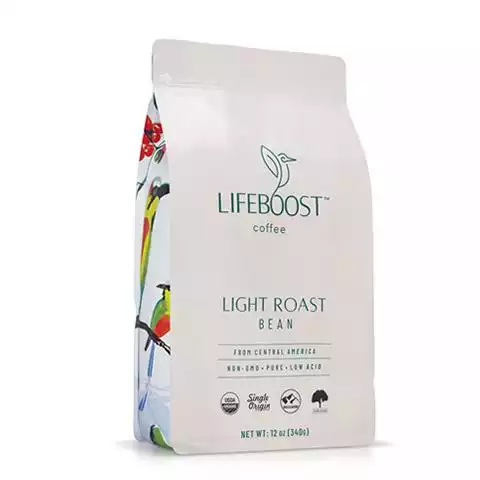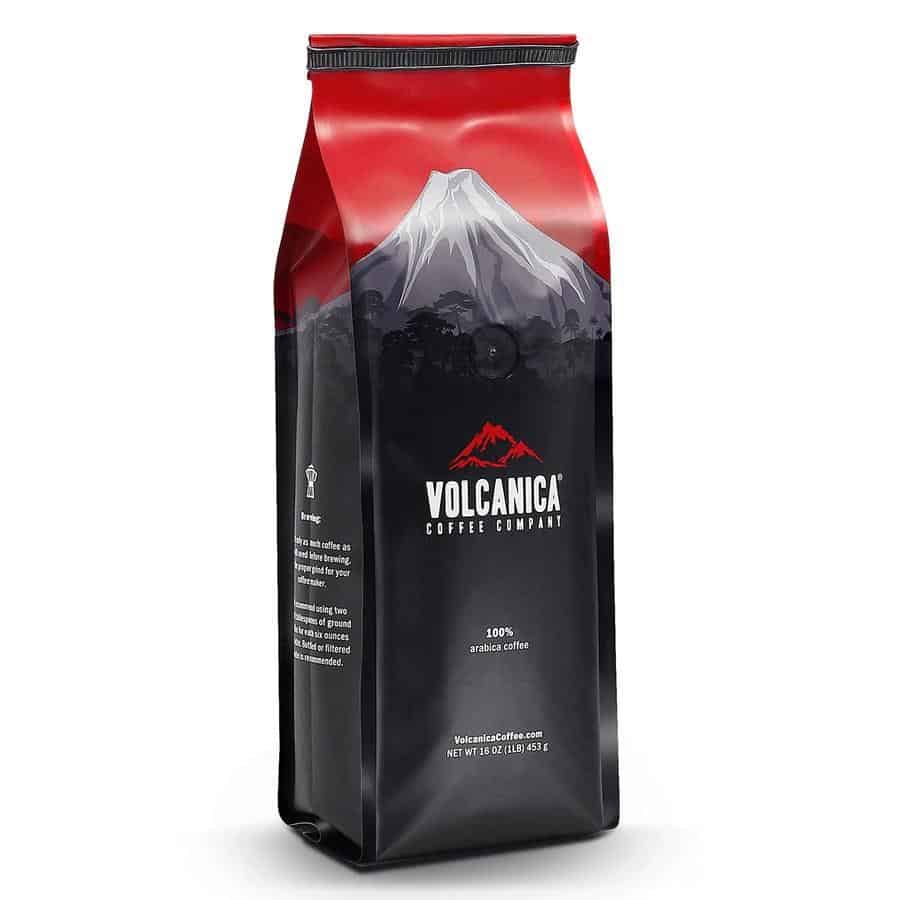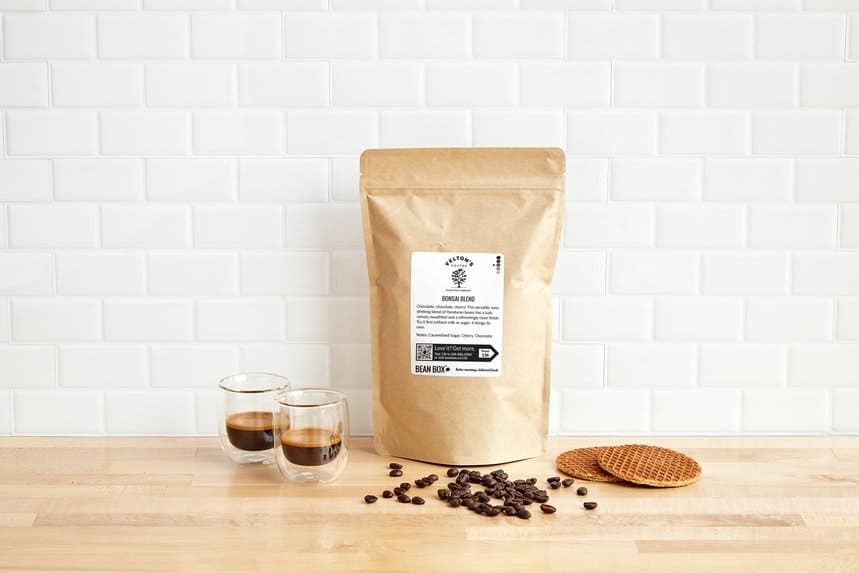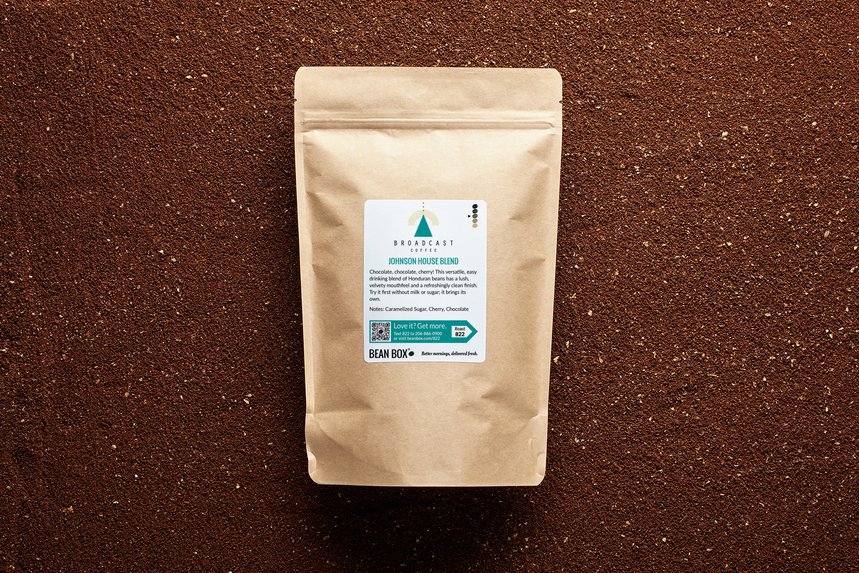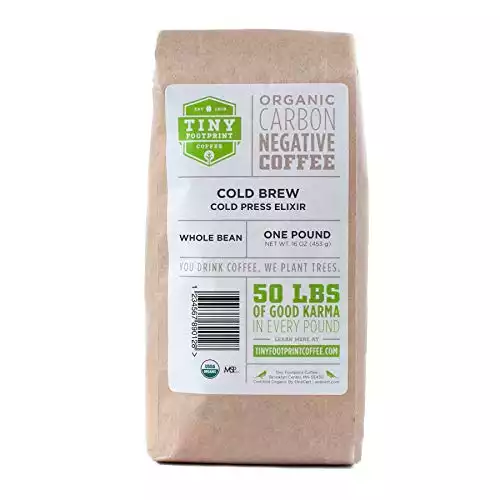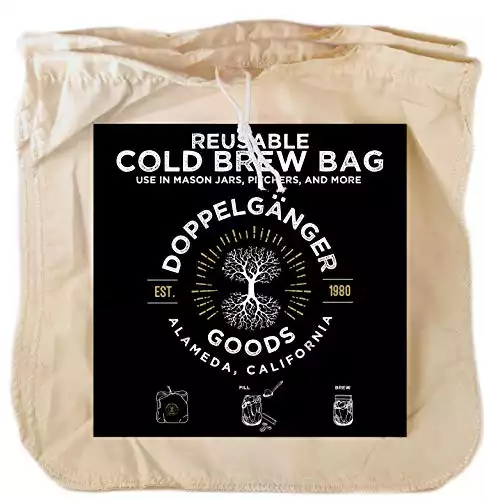The Best Coffee For Cold Brew – 5 Top Picks
When the sun’s beating down outside, I just don’t feel drinking a hot cup of joe.
Instead, I often crave cold brew coffee as a refreshing caffeine fix. Being naturally lighter, friendlier on your stomach and a lot smoother than traditional coffee there are only things to love about it!
Since you’re here, you probably don’t need me to tell you that not all coffee beans are equal and some are better served as a traditional brew whereas others shine when you add cold water. But, don’t worry we’ve searched far and wide for the best coffee beans for cold brew on your behalf.
If you’re in a hurry, here’s the top pick:
Alternatives At A Glance
What is Cold Brew?
Coffee from your drip coffee maker poured over ice is not considered cold brew coffee. That’s just iced coffee.
Cold brew is made by steeping coarse coffee grounds in room temperature or cold water for anywhere from 12 to 24 hours (depending on how soon and how strong you want your coffee). The result is a coffee with lighter flavor and acidity.
If you want to picture the brewing process, in very basic terms – you add cold water to coffee and let it sit for at least 12 hours before filtering it ready to drink. There’s a little more complexity to it and ways to do it but we’ll get into that a little later.
Cold-brew compensates for its lower brewing temperature with its extended extraction time.
The Best Cold Brew Coffee Beans
1. Lifeboost Light Roast
Lifeboost light roast coffee beans are from the mountains of Nicaragua, where they are spring water washed and sun-dried for maximum flavor.
The result is coffee with a medium body, nutty flavor, caramel-like sweetness, with a touch of vanilla and hazelnut. Yup…It’s as drool-worthy as it sounds!
It’s not something you’d expect from a traditional light roast known to have a light body and more fruity flavors. But, I’m not complaining. The sweet and nutty flavors tend to pop more than fruity or floral ones when using coffee beans for cold brew.
Overall, Lifeboost is a great place to start if you’re experimenting with what type of beans you like for cold brew. If you later find you want more of the nuttiness, you’d probably prefer a more medium roast. Whereas, if you are drawn to the aromatic vanilla, a lighter roast may suit you.
Related read: Best Light Roast Coffees
2. Volcanica Cold Brew Coffee
Volcanica Coffee grows and sells beans from volcanic regions around the world.
The climate, elevation, shade, and volcanic soil in those regions are all factors that improve the quality of the coffee grown there. When it comes to trying these beans, you’ll realize the plants’ environment has made a huge difference on flavor and acidity.
A unique blend of naturally low acid coffee which makes a super smooth cold brew.
These beans for cold brew coffee are a carefully crafted blend of Sumatra and low acid Arabica coffee beans. The Sumatra variety is known for its low acidity, sweet chocolatey tones, and hints of licorice or spices like nutmeg.
If you’re looking to try cold brew because coffee wreaks havoc on your stomach, this is a good pick as its naturally lower in acid than usual coffees. As a cold brew, it’s super smooth even on the most sensitive stomach.
Related read: Best Low Acid Coffees
3. Velton’s Bonsai Blend
Velton’s Coffee Roasting Company is a small coffee roaster based in Everett, Washington. I like them because they provide high-quality coffee beans and blends at reasonable prices, which are always freshly roasted.
Their Bonsai Blend is a medium-roasted blend of beans from Brazil, Mexico, and Ethiopia.
Rich, fruity notes with a lingering chocolate finish!
It has a rich body with a distinct sweetness, coupled with a hint of strawberry. Topped off with notes of milk chocolate, caramel, and hazelnut to keep the coffee from tasting too rich.
Nicknamed a cup of morning zen, I’d tend to agree but to be honest, I’d enjoy morning, afternoon, and nightly ‘zen’ at this rate!
It’s more subtle as cold brew, but still bursting with flavor. And I will just never get tired of that strawberry finish. If you appreciate your cold brew black, this is an excellent option for you.
4. The Toffee Coffee
Broadcast Coffee’s Johnson House Blend is another medium-roasted coffee with a big, bold body.
Coffee that tastes like toffee (heck it rhymes too!)
The sweetness of toffee, and the richness of deep, dark chocolate is best cut through with milk. I like using these beans for cold brew when I’m in the mood for some dairy or need to satisfy my sweet tooth without resorting to the chocolate (guilty as charged) every time.
I also like these beans because they remind me of how my family enjoyed our coffee when I was growing up: bold, rich, and dark. Drinking Broadcast Coffee’s Johnson Blend really takes me back to those days!
5. Tiny Footprint Coffee
Tiny Foot Print beans are carbon-negative! They donate a portion of their revenues to aid in reforestation of the Mindo cloud forest in Ecuador and plant trees, which leads to a negative footprint.
100% carbon-negative coffee!
Their beans are also 100% organic, fair trade, shade grown, arabica coffee. I couldn’t think of a more responsible way to consume good cold brew coffee.
The Cold Press Elixir is a blend of light and dark roast arabica beans, “spiked” with Ethiopian coffee to give your cold brew some bright, floral tones. The result is a sweet, creamy, cocoa flavor with a bold body and subtle fruitiness.
Of all the coffees on this list, Tiny Footprint’s Cold Press Elixir is the most sustainable option. So if the mission chimes a bell with you give this coffee a shot, it’s sustainably tasty!
A Buyer’s Guide: The Best Coffee for Cold Brew
How to Buy the Best Coffee for Cold Brew
There are so many options for coffee in the market.
The five I just mentioned happen to be my personal favorites. But if you want to look for the best coffee beans for you, how do you even start looking? And where? Should you look for light roasts or dark roasts?
These are the factors you should consider when choosing between different brands and varieties of coffee.
Single Origin Or Blend?
Single origin means that the coffee you’re brewing is sourced from just one location.
This usually indicates that the beans are of high quality. The reason for this is that roasters often use blends to balance acidity, sweetness, and bitterness with beans that are lacking in one of these and in excess of another.
Higher quality beans are sometimes added to make cheap beans taste better. So selling beans from only one location is a way of saying, “These beans are either all good or all bad.” More often than not, it’s the former.
But even blends have their own unique flavor profiles. If you look, some of the beans I recommended were blends. Your taste preference and your body’s reaction to a coffee cup should determine whether you like it. While “single origin” tends to be an indicator of quality, it’s not a guarantee that you will like it.
Arabica or Robusta?
Arabica beans are grown in highland areas and have more flavorful acidity than robusta beans. Arabica’s flavors are sweeter and more complex, whereas robusta has harsher flavors. Robusta also has twice as much caffeine as arabica, contributing to its bitterness.
Cold brewing coffee is not the best way to extract the full spectrum of flavors from any coffee bean. But while that can make your dark cup of robusta more palatable, a muted cup of arabica coffee will still have more pleasant flavors than a muted cup of robusta coffee.
So if you care about the taste of your coffee, arabica would be the better option. But if you just want caffeine, robusta could be the way to go.
Best Coffee Roast for Cold Brew
The three most common types of roasts for coffee are light, medium, and dark roasts. Dark roast coffee has smokey flavors, while light and medium roasts have flavor profiles unique to every bean. Some beans taste better when lightly roasted, while others taste better medium or dark-roasted. That decision rests on the roaster.
Cold brewing your coffee diminishes its main characteristics. Dark flavors will taste less harsh, and light flavors will be even more subtle. The best way to find out what roast you’ll like best is by experimenting with different beans.
See which notes are retained by cold brew in a light roast, medium roast, and dark roast, and then compare. I personally think a light-medium roast has the perfect amount of flavor and character that I like in my cold brew.
Best Grind Size for Cold Brew
A very coarse grind is generally recommended for cold brew coffee. Because of cold brew’s long extraction time, grinding beans too finely can lead to an over-extracted cup. If you’ve never had one, save yourself the trouble. It’s bitter and downright unpleasant.
With cold brew be aware that grinding too fine can lead to bitterness, and you’ll typically need to go for the largest particle setting on your coffee grinder.
Using Ground Coffee for Cold Brew
If you don’t have your own grinder, or just don’t want to live through the stress of finding the right grind size, that’s fine. Some roasters grind beans for cold brew specifically, so you can buy them pre-ground.
The catch with pre-ground coffee is that it ages a lot faster than whole beans and flavor dissipates. So if you have your own (decent) grinder and you buy coffee in large amounts, grinding your beans yourself is still the much better option.
Benefits of Cold Brew
So cold brew tastes lighter than brewed coffee, and it takes hours to make. Why do people like it so much, then?
First, it’s one of the most enjoyable ways to make use of coffee beans that are going stale. This problem is quite common among coffee drinkers.
As coffee ages, the once-pleasant flavors turn acidic or bitter. Efficient extraction methods that use hot water pull more of these unpleasant flavors from stale coffee. The low temperature in cold brew extraction keeps those out of your cup and in the filter!
Some people also enjoy drinking cold brew because it’s easier on their stomach than hot coffee. The cold brew method does not extract the acids found in the coffee bean’s oils, so it results in a coffee with fewer acids than brewed coffee. So it’s less likely to cause trouble down there if you know what I mean.
Another reason I like cold brew is that I can prepare it the night before, without rushing. I just like the feeling of waking up knowing there’s a coffee already waiting for me to drink when I’m ready for it.
Personally, I find it’s just as worthy a challenge to find the goodness in every bean as it is brewing premium beans. I feel fulfilled when I’m able to make what I believe to be the a tasty cold brew out of the stale coffee I have at home. I’d say it feels even better than discovering great-tasting beans when you can revitalize a bunch of long lost coffee beans!
Disadvantages of Cold Brew
But perfect as this coffee beverage might seem, nothing is perfect. Here are some of cold brew’s disadvantages.
For one, you don’t pick up as many flavors from your beans as you would in a brewing method that makes use of hot water.
Cold brew coffee by nature has a milder flavor profile than brewed coffee. If your beans are stale, that’s a good thing. But if your beans are fresh and premium quality, then you’re muting some subtle aromas that you would typically get in, say, a pour over.
If you’re the type to procrastinate, then brew time is a clear disadvantage for cold brew. While it takes hot coffee only around 5 minutes to brew, it takes cold brew at least 12 hours. If you like to prepare coffee in advance like me, cold brew takes just the same amount of preparation as normal coffee.
It’s also a bit more pricey to make cold brew your daily source of caffeine. Cold water or water at room temperature isn’t as effective as hot water at extracting caffeine, flavors, and antioxidants from coffee beans. So brewing coffee cold will require a tighter beans-to-water ratio than your average brewed coffee.
And as a result of this tight ratio and long extraction time, cold brew coffee contains more caffeine per fluid ounce than brewed coffee. So, some people use their cold brew as concentrate instead. If it’s too dark, they just add water or milk to dilute it. It’s more economical that way, too.
Life hack!
Ways to Make a Cold Brew
Most home brewers are familiar with the immersion method of making cold brew coffee.
It involves using 1:4 grams to mL to 1:8 grams to mL ratio of beans to water and steeping the beans in water for 12-24 hours. But there is a lesser-known method, called the slow drip method, which is a totally different cold brewing process.
Immersion vs. Slow Drip
As the name suggests, “slow drip” involves slowly dripping cold water onto ground beans, and catching the resulting coffee below.
This is faster than the immersion method, as cold brewing coffee via slow drip takes *only* 3 to 5 hours. However, slow drip cold brew is thin-bodied with a lighter flavor profile compared to the immersed cold brew’s fuller body and flavor profile.
Most people still prefer the immersion method for making cold brew coffee. It’s a lot simpler, and all you need is something to function as a large tea bag. You can use a small old tea towel as I did, or you could use a filter like the below:
Once you have all your materials and your beans ready, all you need is water and you can start cold brewing some coffee!
Here’s a step-by-step guide to making your first cup of cold brew coffee.
The Final Verdict
Simply put, the best beans for cold brew coffee are the ones that make, in your opinion, the best cold brew. Your taste preference matters more than what flavor notes the coffee has, or whether the beans are roasted light, medium, or dark.
However, I do think Lifeboost’s Light Roast Coffee is my top pick to start experimenting with right now. Volcanica’s Cold Brew Coffee is also an excellent low acid option for people with sensitive stomachs.
A unique blend of naturally low acid coffee which makes a super smooth cold brew.
I believe once you give one of these bags of beans a try, you’ll join the ranks of becoming a fellow lover of cold brewing! Especially if you’re rather geeky (in a good coffee master sort of way). Because you can manipulate the brew time, grind size, and beans-to-water ratio to get the best coffee possible out of every bean, regardless of its origin or how much it was roasted!
Stay caffeinated folks!

